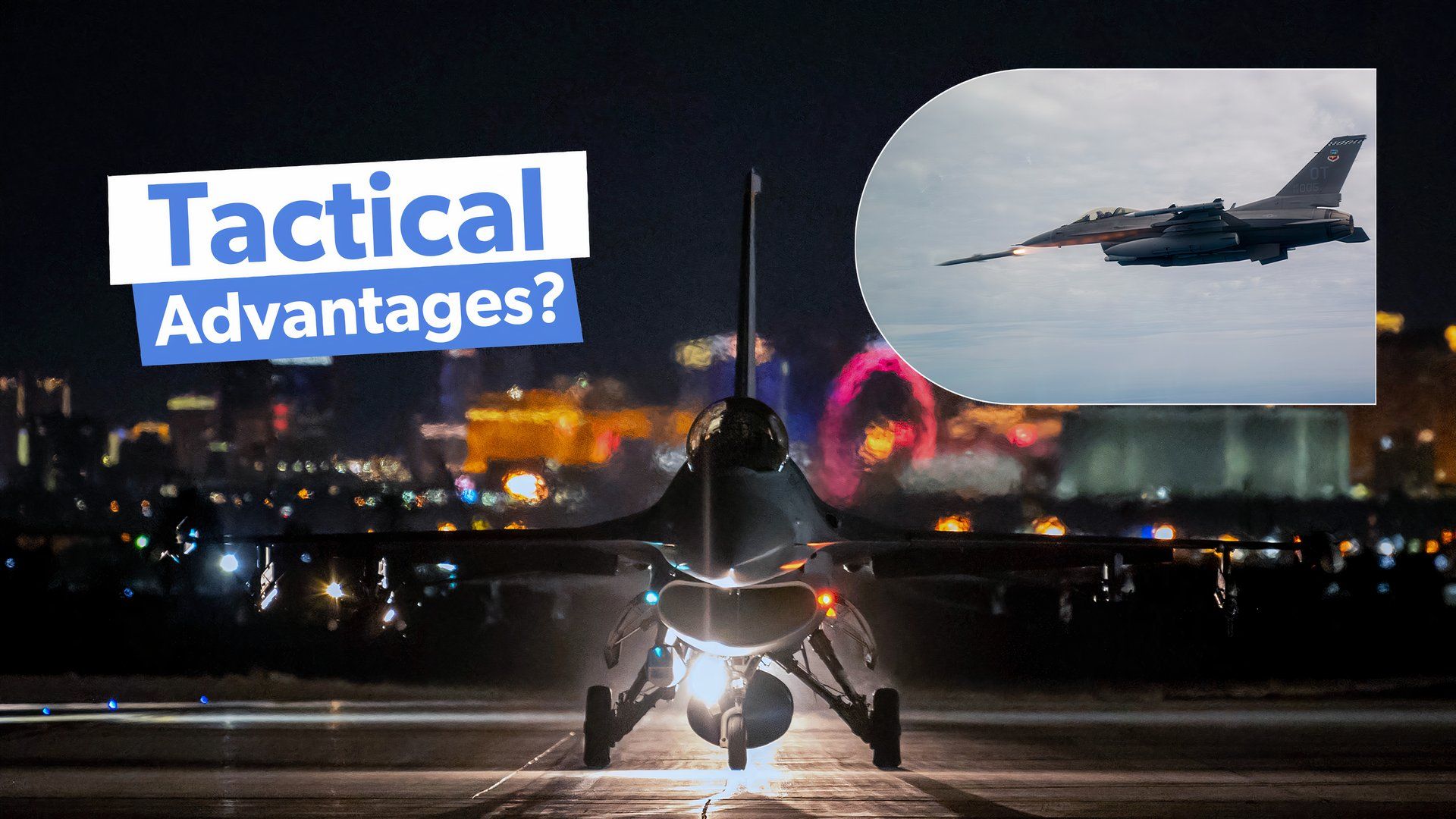Summary
- F-16 is versatile, excelling in air-to-air and air-to-ground missions with a wide range of weapons.
- Superior agility allows F-16 to outmaneuver opponents, vital for dogfights and tight aerial maneuvers.
- Interoperability in coalition operations, network-centric capabilities, and high operational efficiency are key strengths.
The F-16 Fighting Falcon, one of the most iconic fighter jets in modern military history, continues to play a vital role in air combat and strategic operations worldwide. Developed by General Dynamics (now Lockheed Martin) and first introduced in the late 1970s, the F-16 has undergone numerous upgrades to maintain its edge in modern warfare.
In this article, we explore the tactical advantages of the F-16, highlighting why it remains a crucial asset for air forces around the globe.
Versatility and multi-role capability
One of the most significant tactical advantages of the F-16 is its versatility. Designed as a multi-role fighter, the F-16 excels in both air-to-air combat and air-to-ground attack missions.
Photo: USAF
This dual capability allows air forces to use the F-16 for a variety of tasks, including air superiority, ground attack, and reconnaissance missions. The aircraft can carry an extensive range of weapons, from air-to-air missiles to precision-guided munitions, enabling it to adapt to different mission requirements seamlessly.

Related
Examined: The Role Of The F-16 Block 70 In Modern Air Forces
The F-16 Block 70 is compatible with the latest-generation fighter platforms.
Additionally, the F-16’s advanced avionics and targeting systems provide a significant tactical advantage. According to the United States Air Force, the jet is equipped with state-of-the-art radar systems, allowing it to detect, track, and engage multiple targets simultaneously.
The incorporation of targeting pods, such as the AN/AAQ-33 Sniper and LANTIRN systems, enhances its precision in striking ground targets, even in adverse weather conditions or at night. These advanced systems improve situational awareness, allowing pilots to make informed decisions quickly.
Superior agility and maneuverability
The F-16 is renowned for its exceptional maneuverability. Its aerodynamic design, combined with a high thrust-to-weight ratio, allows the aircraft to perform tight turns and high-G maneuvers.
This agility is crucial in dogfights, where the ability to outmaneuver an opponent can mean the difference between victory and defeat. According to Slash Gear, the F-16’s fly-by-wire control system further enhances its handling characteristics, providing pilots with precise control during complex aerial maneuvers.
The F-16’s design allows it to operate from a variety of airfields, including austere and remote locations. Its relatively short takeoff and landing distances enable deployment from smaller airstrips, enhancing its strategic mobility.
This capability is vital for rapid response scenarios, where the ability to project airpower quickly can deter aggression and provide support to ground forces. The global presence of the F-16, with deployments in numerous countries, underscores its role as a versatile and reliable platform in international defense strategies.
Photo: USAF
The F-16’s operational efficiency is also noteworthy. It has a high sortie rate, meaning it can be deployed frequently without requiring extensive downtime for maintenance. This reliability ensures that air forces can maintain a continuous presence in the skies, a critical factor in sustained military operations.
Interoperability and network-centric warfare capabilities
The F-16’s widespread use among NATO and allied nations provides a strategic advantage in coalition operations, as written in Air and Space Forces. Its interoperability with various air forces allows for seamless integration during joint missions.
Photo: Aqeela_Image | Shutterstock
Standardized training programs and shared logistics support further enhance this cooperation. The F-16’s ability to communicate and operate effectively with other aircraft in multinational forces ensures a unified and coordinated approach in combat scenarios.

Related
These Are The World’s Top 5 Air Forces Equipped With F-16 Fighter Jets
The F-16 is one of the most ubiquitous fighter jets in the world, with over 25 operators.
In modern warfare, information superiority is paramount. The F-16’s integration into network-centric warfare environments provides a tactical edge. Equipped with datalink systems, the F-16 can share real-time information with other aircraft, ground units, and command centers.
This connectivity enables coordinated attacks, improved situational awareness, and rapid decision-making. The ability to receive and disseminate battlefield data ensures that F-16 pilots operate with the latest intelligence, enhancing mission effectiveness.
Conclusion
The extensive use of the F-16 has resulted in a wealth of pilot training and combat experience – more than 4,600 units have been produced across its production lifetime, per Sandboxx. Many air forces have developed rigorous training programs to maximize the potential of the F-16.
Photo: USAF
The knowledge and skills gained from decades of operational use contribute to the aircraft’s effectiveness in combat. Experienced F-16 pilots bring valuable insights into tactics and strategies, further enhancing the aircraft’s combat performance.

Related
A Closer Look At The F-16 Fighting Falcon’s Impressive Maneuverability
Worldwide, 25 countries’ Air Forces operate the F-16
All in all, the F-16 Fighting Falcon remains a cornerstone of modern air combat due to its versatility, advanced systems, and superior maneuverability. Its continuous upgrades, interoperability, and strategic mobility further enhance its tactical advantages.
As air forces worldwide seek to maintain air superiority and adapt to evolving threats, the F-16’s enduring capabilities ensure its relevance in modern warfare. Whether in dogfights, ground attack missions, or coalition operations, the F-16 continues to exemplify excellence in military aviation.






